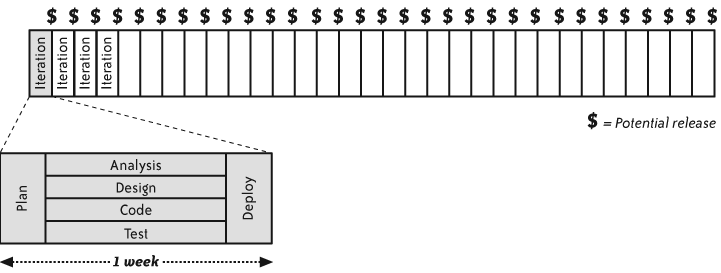The XP Lifecycle
One of the most astonishing premises of XP is that you can eliminate requirements, design, and testing phases as well as the formal documents that go with them.
This premise is so far off from the way we typically learn to develop software that many people dismiss it as a delusional fantasy. “These XP folks obviously don’t know what they’re talking about,” they say. “Just last month I was on a project that failed due to inadequate requirements and design. We need more requirements, design, and testing, not less!”
That’s true. Software projects do need more requirements, design, and testing—which is why XP teams work on these activities every day. Yes, every day.
You see, XP emphasizes face-to-face collaboration. This is so effective in eliminating communication delays and misunderstandings that the team no longer needs distinct phases. This allows them to work on all activities every day—with simultaneous phases—as shown in Figure 3-2.

Figure 3-2. XP lifecycle
Using simultanous phases, an XP team produces deployable software every week. In each iteration, the team analyzes, designs, codes, tests, and deploys a subset of features.
Although this approach doesn’t necessarily mean that the team is more productive,[5] it does mean that the team gets feedback much more frequently. As a result, the team can easily connect successes and failures to their underlying causes. The ...
Get The Art of Agile Development now with the O’Reilly learning platform.
O’Reilly members experience books, live events, courses curated by job role, and more from O’Reilly and nearly 200 top publishers.

